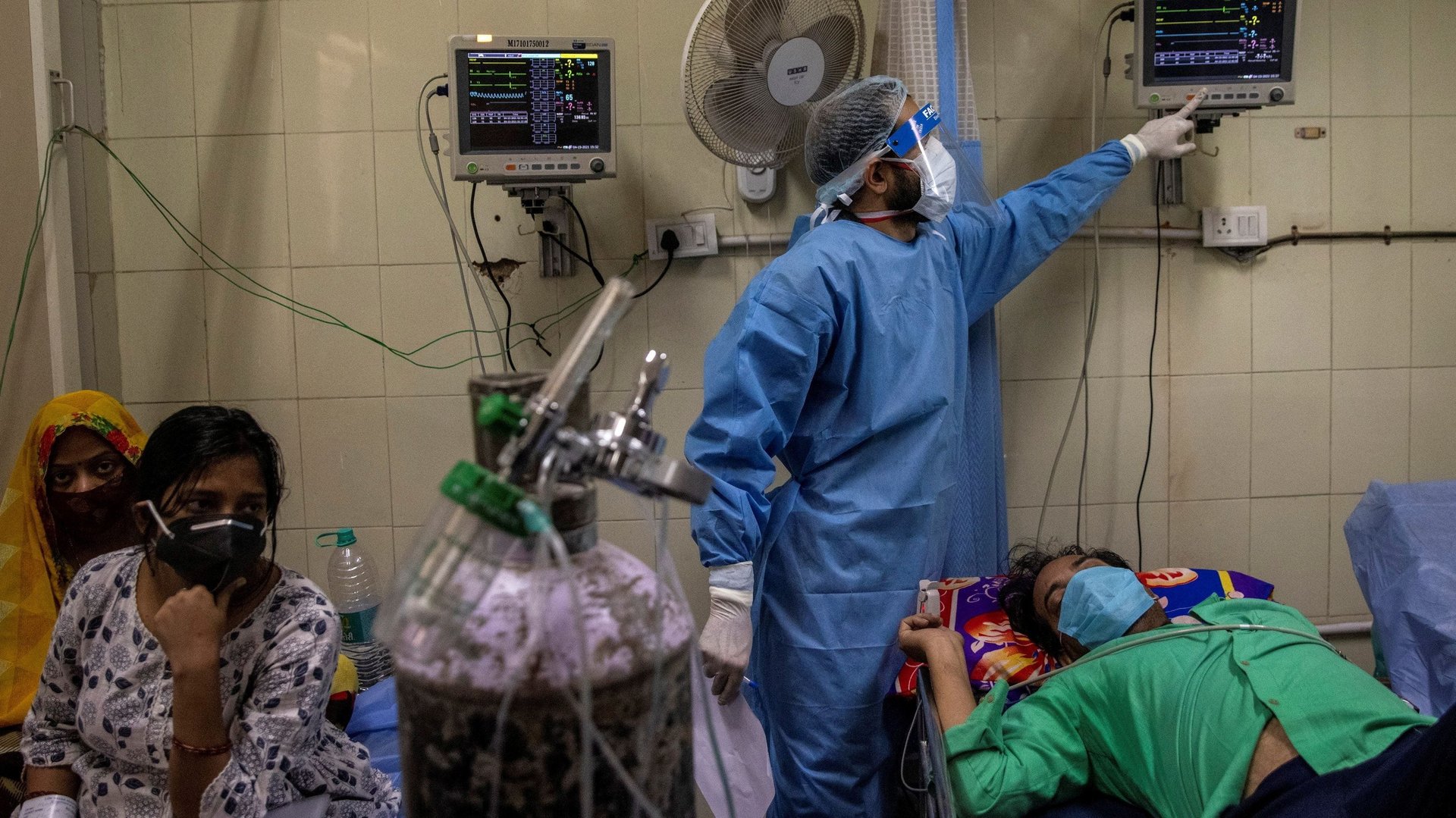India’s Covid-19 crisis has gone from bad to catastrophic in just a fortnight
This post has been updated.


This post has been updated.
In just two weeks, India’s second wave of Covid-19 has become disastrous.
The country, which was reporting less than 15,000 cases a day just last month, has been seeing over 200,000 Covid-19 infections a day since April 15. Yesterday (April 19), India reported 273,810 new Covid-19 infections and 1,619 deaths—both highest single-day spikes. That takes the active Covid-19 caseload tally up to nearly 2 million.
The current wave started in the western states of Maharashtra and Gujarat and has now engulfed almost the entire country.
Delhi, for instance, had only around 2,800 new infections on April 1, and active infections stood at 10,498. Yesterday, it recorded 25,462 infections and an active caseload of 74,941. That amounts to a 900% increase in new infections and a 700% increase in active cases in just 18 days.
What is perhaps most alarming is that nearly 30%—one in three Delhiites—of those who take the Covid-19 test are now testing positive.
Given this surge, the Delhi government has announced a week-long curfew today (April 19). Almost all commercial establishments and public places, except those offering essential services, will be shut till April 26.
Across the country, though, this unprecedented and sudden rise in infections has brought India’s health infrastructure to its knees.
A dire shortage of oxygen
Several Indian states have been raising the alarm over oxygen shortage, a basic necessity, which left unfulfilled could lead to significantly more deaths. The chief ministers of Delhi and Maharashtra have asked the central government to ramp up the supply. Deaths have been reported from states like Madhya Pradesh and Uttar Pradesh because patients could allegedly not be oxygenated on time.
Vinay Srivastava, a 65-year-old journalist in Lucknow, Uttar Pradesh, live-tweeted on April 17 his dipping oxygen level and the fact that he had no access to a hospital bed with oxygen. His family later confirmed his death.
Indian social media is currently flooded with such tragic appeals for oxygen support, ICU beds, and beds with ventilators. With a stark shortage of hospital beds across the country, Covid-19 patients have been advised to try and find cylinders and machines to oxygenate themselves at home.
The state response to the shortage
Meanwhile, India’s railway minister Piyush Goyal yesterday said that states “must control” the demand for oxygen. He said he heard reports where oxygen was being administered even to patients who did not need it.
India is now proposing to import 50,000 metric tonnes of oxygen in the face of this shortage. The country also plans to run “oxygen express” trains to deliver liquid oxygen to those states that need it the most, especially Maharashtra and Madhya Pradesh. The railway ministry is currently in the process of setting up a “green corridor” for this purpose.
Besides oxygen shortage, large Indian cities are running out of hospital beds. In Delhi, chief minister Arvind Kejriwal announced the addition of 6,000 Covid-19 beds, which would be functional in the next three days. The Delhi government will also convert some schools, the Commonwealth Games stadium, and a sports complex to house these beds.
This also includes the 500-bed facility near Delhi Cantonment, which has been set up by India’s Defence Research and Development Organisation.
But the shortages have led to widespread panic and a scramble for drugs and treatments that may not even be as successful.
Searching for remdesivir and convalescent plasma
Indian Twitter and Instagram are currently filled with appeals for remdesivir injections. This anti-viral drug has been recommended in moderate-to-severe cases, in a carefully selected subset of Covid-19 patients.
The drug is currently in short supply, and India has banned its export to meet the domestic demand. The government had also asked drugmakers to put a price cap on the injection. The chief minister of Jharkhand, Hemant Soren, has sent out a request to pharmaceutical companies in Bangladesh to meet the demand in the state.
But both its shortage, and the fact that Covid-19 doesn’t have a fixed treatment course yet, has led Indians to believe that remdesivir is absolutely essential.
While evidence on its efficacy has been hotly debated, the benefit of remdesivir is limited to reducing hospital stay in some cases and marginally improving recovery. But since it is an intravenous drug to be given over five days, it does mandate a hospital stay for that period.
Several doctors have cautioned against the unchecked use of remdesivir, and have tried to calm their patients by telling them that it is no cure-all.
A physician is best qualified to determine whether or not a drug is required.